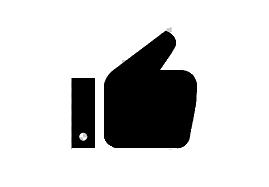Beautiful Islamic Calligraphy and Islamic Art
Islamic calligraphy and art represent some of the most profound and visually stunning expressions of faith in the Islamic world. Both Arabic and Urdu calligraphy hold a significant place in Islamic art, reflecting the beauty and depth of spiritual expression. This article delves into the styles and significance of Islamic calligraphy and art in Arabic and Urdu, offering insights into their historical and cultural importance.
 |
The Significance of Islamic Calligraphy
Islamic calligraphy is a revered art form within the Islamic tradition, known for its intricate designs and spiritual significance. Here’s why it’s important:
- Religious Expression: Calligraphy is often used to transcribe verses from the Quran and Hadith, making it a means of expressing devotion and reverence.
- Artistic Tradition: Islamic calligraphy has evolved into a sophisticated art form with various styles, each representing different periods and regions within the Islamic world.
- Decorative Art: Beyond religious texts, calligraphy adorns buildings, manuscripts, and personal items, blending art with spiritual significance.
Styles of Arabic Calligraphy
Arabic calligraphy features several distinct styles, each with its own unique characteristics:
- Kufic Script: One of the earliest styles of Arabic calligraphy, known for its angular and geometric shapes. It is often used in architectural decoration and early Quranic manuscripts.
- Naskh Script: A more cursive and flowing style, widely used in printed texts and everyday writing. It is known for its clarity and readability.
- Diwani Script: Characterized by its ornate and decorative nature, this script is often used for formal documents and artistic pieces.
- Thuluth Script: Recognizable by its large and elegant curves, Thuluth is used in titles and decorative inscriptions, often seen in mosque interiors.
Styles of Urdu Calligraphy
Urdu calligraphy, influenced by Persian and Arabic traditions, has its own unique styles:
- Nastaliq Script: Renowned for its fluid and graceful lines, Nastaliq is the most popular script used in Urdu calligraphy. It is often employed in poetry and literary works.
- Naskh Script: While primarily associated with Arabic, Naskh is also used in Urdu calligraphy for its clarity and ease of reading.
- Shikasta Script: Known for its intricate and artistic flourishes, Shikasta is less common but highly valued for its aesthetic appeal.
The Role of Islamic Art
Islamic art, encompassing both calligraphy and visual art, plays a crucial role in expressing and preserving Islamic culture and faith:
- Historical Significance: Islamic art has a rich history that reflects the diverse cultures and influences within the Islamic world, including Persian, Ottoman, and Mughal contributions.
- Spiritual Representation: Artworks often depict themes of divine beauty, spiritual enlightenment, and the infinite nature of God, reinforcing the spiritual aspects of Islamic teachings.
- Cultural Heritage: Islamic art helps preserve cultural heritage and traditions, providing a visual record of the artistic achievements and religious devotion of past and present societies.
Where to Explore Islamic Calligraphy and Art
- Museums and Galleries: Institutions like the Museum of Islamic Art in Doha and the Islamic Arts Museum Malaysia offer extensive collections of calligraphy and art from various Islamic periods.
- Online Resources: Websites such as the Metropolitan Museum of Art and Google Arts & Culture provide digital access to Islamic calligraphy and art collections.
- Local Artisans: Many artists and calligraphers offer workshops and exhibitions, providing opportunities to learn about and appreciate Islamic art firsthand.
Conclusion
Islamic calligraphy and art, in both Arabic and Urdu, represent a profound expression of faith and artistic heritage. By exploring the various styles and understanding their significance, one can gain a deeper appreciation for the beauty and spiritual depth of Islamic artistic traditions. Whether through historical manuscripts, modern interpretations, or local artisan works, Islamic calligraphy and art continue to inspire and enrich the cultural landscape of the Islamic world.
 |
 |
 |
 |





.jpg)
1 Comments
When it comes to creating your resume and cover letter, the font you select can play a large role in the image you portray and readability. If you've ever played around with the textandfonts on your word processing software, you've no doubt notices dozens and dozens of pre-loaded options from the ultra-conservative to the downright whimsical. Different fonts communicate different messages; learn how to pick the best for for your resume.
ReplyDelete